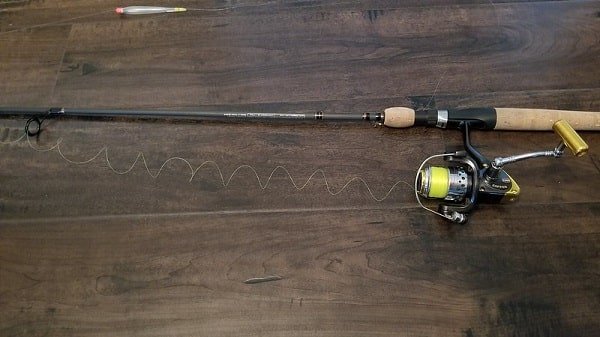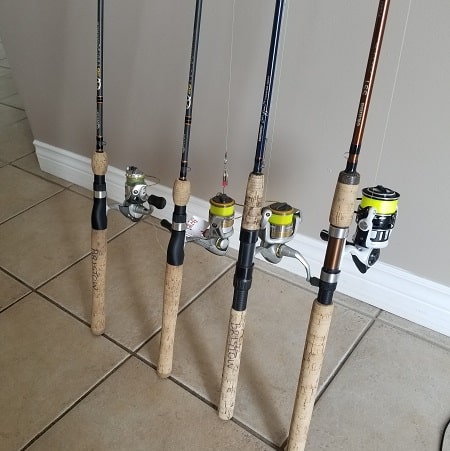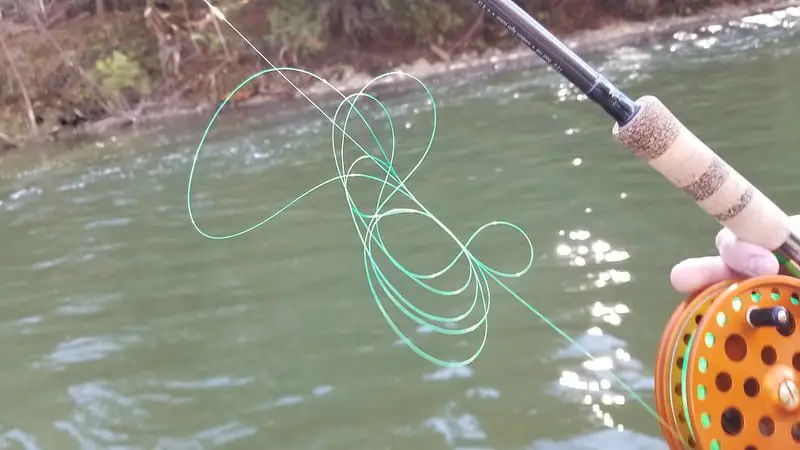How To Straighten Fishing Line: All Line Types

If you are reading this, you probably need some tips on how to straighten fishing line.
Fishing lines tends to coil when left on the reel for a long time, especially if it was wound on tight or if it’s left in the sun or heat for too long.
Cheap lines will also coil more. If this is the case for you, it’s best to get a new and better fishing line.
These are my two easy and effective ways to straighten out fishing lines and some tips to prevent it.
How To Straighten Fishing Line: Method 1
Even good fishing lines can have some line memory if left for a long time, or if left for too long in the sun, or if it’s exposed to heat.
Very cold weather can also cause problems with the line, including excessive coiling as it comes off the reel. I’ve seen clients come to the river to fish with me with the line so badly coiled up that it was impossible to fish with.
Line coils, line twist, and line tangles are the result of lines that are not straight.
The easiest method to straighten the monofilament fishing line is to stretch it by tying it to something stationary, then walk back about one and a half times the length you could normally cast, and then pull slowly to stretch the line.
Just be careful not to pull too hard or it could break the line near the reel and cause you to lose a lot of line. This method often works on good quality lines but not so well on cheap lines.
Straightening Your Fishing Line: Method 2
Applying some gentle heat will straighten out a badly coiled fishing line. How I do this is by pulling about two casts length of the line off the rod and reel, trying to keep it in a straight line so it doesn’t tangle. You will need some space for this, like a big backyard or a park.
Then grab a dry towel, a cloth, or a piece of soft leather, just something soft and not abrasive. Then, with one hand, squeeze the line near the reel in the towel and reel it in at medium to slow speed. This will cause some friction and heat, which will warm and stretch the line at the same time.
Don’t reel too fast because it can get too hot, which can damage the line and actually cause more coils that will NOT come out.
NOTE: Some fishing lines are just cheap and will not respond to these methods. If you are using a cheap line, it’s time to buy a new line.
Store Your Line Properly

Storing your line properly does help prevent line coil. Store somewhere dry and dark.
Do not leave your line in excessive heat or cold, and do not leave it exposed to the sun for long periods of time.
Do not leave your line in wet or damp areas.
The fishing line should be changed every 2 to 3 years since it will naturally degrade and become weaker, which can result in weak knots and losing some big fish.
Avoid Cheap Fishing Lines

One of the tips I provide my clients is to avoid cheap lines since they tend to twist and tangle much more than premium lines do.
As a fishing guide, I only use premium fishing lines because they tend to work better and last longer, with fewer issues.
If you are not sure what lines to use for the type of method or the type of fish you fish for, check out these articles:
- Best Fishing Line for Trout
- Best Line For Salmon Fishing
- Best Line For Steelhead and For Float Fishing
These are my two proven methods I use to straighten out fishing line, and they work on monofilament, fluorocarbon, and Copolymer lines.
Braided lines do not tend to coil. If your braided line does coils, try these methods.
Tight Lines,
Graham
FISHING WITH FLUOROCARBON. WHY USE FLUOROCARBON, What is it made from?
Monofilament Fishing Line – Why Use Monofilament – What is it made from?

Thank you for the most informative website on floatfishing that I’ve come across a plus!! Graham I’m having a problem with the raven 8 pound main line sticking to itself when I’m center pinning a slow drift, what would you suggest ?I’ve tried cleaning the line which helps a little is there a lubricant that you would recommend.
Hi Charlie,
90 percent of the time I’m 8 pound Raven line. I have no issues like that except if I reel in under a lot of tension, like when fighting a big fish, which can cause the line to embed itself and then stick on the very next drift. Pulling it out by hand on that one drift is the only option, but that always fixes it for all future drifts. Keep in mind if you start reeling a fish in from 200 feet, but only drift 100 feet on consecutive drifts, should you get beyond that 100 feet it will stick until you let all 200 feet of line out. I hope that makes sense.
And I never lube my line or even clean it, I’ve never had to.
My only though if this is happening all the time for you, for some reason when you reel the float in it’s under to much tension. I hope you’re not running the line between your fingers on the way in and creating extra tension?
Hope that gives you some clarity.
Graham